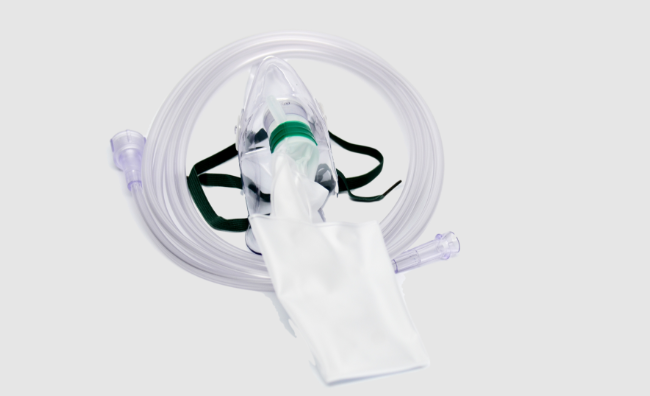What is Õygen? The Role of Õygen

A essential elements Õygen is a colorless, odorless and tasteless gas that makes up about 21% of the Earth’s atmosphere. It is also the third most abundant element in the universe, after hydrogen and helium. õygen has the chemical symbol O and is represented by atomic number 8 on the periodic table.
Discovered in the late 18th century by Swedish scientist Carl Wilhelm Scheele, õygen was originally named “fire air” due to its ability to support combustion. However, it wasn’t until French chemist Antoine Lavoisier conducted experiments with õygen that it was officially recognized as an element and given its current name.
One of the most essential elements for life on Earth, õygen plays a crucial role in sustaining all living organisms. From plants to animals, humans included, every living thing requires Õygen for survival. This vital gas is involved in various biological processes such as respiration, metabolism, and energy production.
In terms of its physical properties, õygen is a highly reactive element which means it readily combines with other elements to form compounds such as water (H2O) and carbon dioxide (CO2). It can exist in three different forms: as a gas at room temperature (diatomic molecule), liquid when cooled below -182.95°C (-297°F), or solid at temperatures below -219°C (-362°F).
The Role of Õygen in our Body
Õygen is an essential element for life on Earth, and it plays a crucial role in the functioning of our body. Every cell in our body needs oygen to survive and carry out its functions effectively. In this section, we will explore the various ways in which oxygen supports our body’s overall health and well-being.
Production of Energy: õygen is necessary for the production of energy in our body. When we breathe, õygen enters our lungs and gets transported to the cells via red blood cells. Inside each cell, oxygen combines with glucose to produce ATP (adenosine triphosphate), which is the primary source of energy for all cellular activities.
Cellular Respiration: Oxygen also plays a vital role in cellular respiration, a process that converts nutrients from food into energy. During this process, oxygen breaks down glucose molecules to release energy that fuels numerous bodily functions such as muscle movement, digestion, and brain activity.
Supports Brain Function: Our brain requires a constant supply of oxygen to function correctly. It uses about 20% of the total oxygen intake by the body even though it only accounts for 2% of its weight. Insufficient levels of oxygen can lead to impaired cognitive function, memory loss, and dizziness.
Benefits of Õygen for Health and Well-being
õygen is an essential element for life. It makes up about 21% of the Earth’s atmosphere and is crucial for all living organisms, including humans. In this section, we will explore the numerous benefits of oygen for our health and well-being.
Improved Brain Function: The brain requires a constant supply of oygen to function optimally. When we breathe in oygen, it gets transported to our brain through the bloodstream, providing it with the necessary energy to carry out its functions effectively. This helps improve our cognitive abilities such as memory, concentration, and decision-making skills.
Boosts Immune System: Oygen plays a vital role in strengthening our immune system. White blood cells require oygen to fight off bacteria, viruses, and other harmful pathogens that can cause infections or diseases. By increasing your intake of oygen-rich air, you can give your immune system a much-needed boost.
Increased Energy Levels: Oygen is responsible for breaking down glucose into ATP (adenosine triphosphate), which is the main source of energy for our body’s cells. With increased levels of oygen in the body, there is a higher production of ATP, leading to improved energy levels and better physical performance.
Detoxifies the Body: Our bodies need sufficient amounts of oygen to eliminate toxins and waste products from our systems effectively. Breathing in fresh air with high levels of oygen helps flush out carbon dioxide and other impurities from our lungs and keeps them healthy.
How Much Õygen Do We Need?
The amount of oygen we need varies from person to person and can also depend on various factors such as age, health status, and physical activity level. However, on average, a healthy adult requires about 550 liters of oygen per day.
This may seem like a lot, but it is important to understand that oygen is constantly being used by our bodies for various essential functions. Our cells use oygen to produce energy through the process of metabolism. This energy is then used for all bodily functions like breathing, digestion, circulation, and even thinking.
At rest, an adult breathes in approximately 12-15 times per minute and inhales about 500 milliliters (ml) of air with each breath. However, during physical activity or exercise, this number can increase significantly depending on the intensity of the activity.
When we engage in strenuous exercise or activities that require more energy, our body’s demand for oxygen increases drastically. In these situations, our breathing rate can go up to 40-60 breaths per minute and we can inhale up to 2-3 liters of air with each breath.
Apart from daily activities and exercise, other factors such as altitude and health conditions can also affect the amount of oxygen we need. At high altitudes where the air pressure is lower, there is less concentration of oxygen in the air which means that our bodies have to work harder to get enough oxygen.
Ways to Increase Õygen Levels in the Body
The õygen levels in our body are crucial for maintaining overall health and well-being. Oxygen is essential for every cell and organ in our body to function properly, from the brain to the muscles. However, due to various factors such as pollution, unhealthy lifestyle habits, and medical conditions, many people struggle with low oxygen levels. In this section, we will discuss some effective ways to increase oxygen levels in the body.
Deep Breathing Exercises:
One of the simplest and most effective ways to increase oxygen levels in the body is through deep breathing exercises. These exercises involve slow and controlled inhalation and exhalation, which can help expand your lungs’ capacity and improve their efficiency in absorbing oxygen. Practice belly breathing or diaphragmatic breathing by inhaling deeply through your nose and filling up your belly with air before exhaling slowly through your mouth.
Regular Exercise:
Regular physical activity not only keeps you physically fit but also helps maintain healthy oxygen levels in the body. When you exercise, your heart pumps faster, increasing blood flow throughout the body. This increased blood flow carries more oxygen to your cells and tissues, promoting better oxygenation of the body.
Get Some Sun:
Sunlight is a natural source of vitamin D that plays a significant role in improving lung function. Spending some time outdoors under direct sunlight can help boost vitamin D production in the skin cells, which can improve lung function and increase oxygen levels.
Potential Risks and Side Effects of High or Low Õygen Levels
While oxygen is essential for life, having too much or too little of it in our bodies can lead to potential risks and side effects. It is important to understand these risks and how they can affect our health.
High Oxygen Levels:
1. Oxygen Toxicity: Breathing high levels of oxygen for an extended period of time can lead to oxygen toxicity, which occurs when there is an excess amount of oxygen in the body. This can cause damage to the lungs, eyes, and central nervous system.
Lung Damage: Inhalation of high levels of oxygen over a long period of time can also cause inflammation in the lungs, leading to lung damage and difficulty breathing.
Retinopathy: High levels of oxygen in premature infants’ blood have been linked to retinopathy, a condition that affects the blood vessels in the eye and may lead to vision loss.
Severe Headaches: In some cases, breathing pure oxygen at high altitudes or during hyperbaric treatments may result in severe headaches due to changes in brain blood flow.
Increased Risk for Heart Problems: People with chronic obstructive pulmonary disease (COPD), emphysema, or other respiratory conditions may experience increased heart rate and blood pressure when exposed to high levels of oxygen.
Fun Facts
Most abundant element on Earth: Õygen is the most abundant element on our planet, making up around 21% of the Earth’s atmosphere.
Essential for life: Oxygen is essential for nearly all living organisms to survive. It is a key component in cellular respiration, the process by which living things convert energy from food into usable energy.
Colorless and odorless gas: Despite its significance, oxygen itself is actually colorless and odorless gas. This can make it difficult to detect, but luckily we have other ways of measuring its presence.
Discovered by multiple scientists: Oxygen was first discovered by Swedish chemist Carl Wilhelm Scheele in 1772, however, it was later independently discovered by Joseph Priestley in 1774 and Antoine Lavoisier in 1775.
The name comes from Greek roots: The name “oxygen” comes from the Greek words “oxy” meaning acid and “genes” meaning forming or producing. This reflects oxygen’s role as a key component in many acids and compounds.
Used in medical treatments: Pure oxygen has many medical uses including helping with respiratory issues such as asthma or COPD, aiding wound healing, and even treating decompression sickness (commonly known as “the bends”).
Boosts brain function: Our brains require a constant supply of oxygen to function properly. In fact, our brain uses approximately 20% of the oxygen we breathe in!
The Power for Healthy Life
Õygen is undoubtedly a powerful element that is essential for sustaining life on Earth. Its ability to support various biological processes and its role in maintaining overall health and well-being cannot be overstated. In this article, we have explored the properties of oxygen, its sources, and the ways it impacts our bodies.
From the moment we take our first breath after birth, oxygen becomes an integral part of our existence. It is the primary component of air, making up around 21% of the Earth’s atmosphere. This means that every time we inhale, our lungs are taking in approximately one-fifth of oxygen from the air.
The journey of oxygen in our body begins with inhalation through the nose or mouth. It then travels down to the lungs where it diffuses into tiny blood vessels called capillaries. These capillaries transport oxygen-rich blood to different parts of our body, including vital organs like the heart and brain.
One crucial process that occurs due to oxygen is cellular respiration. It is a metabolic process where cells use oxygen to convert nutrients into energy. This energy fuels all bodily functions, from digestion to physical activities like running or walking.
Moreover, studies have shown that sufficient levels of oxygen in the body can boost cognitive function and improve mental clarity. Oxygen also plays a significant role in maintaining healthy skin by promoting cell regeneration and collagen production.




